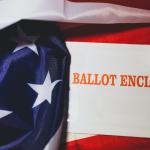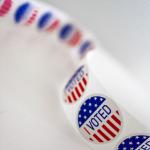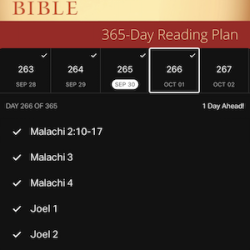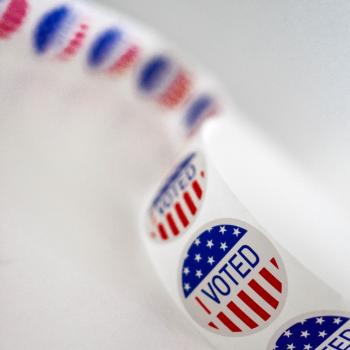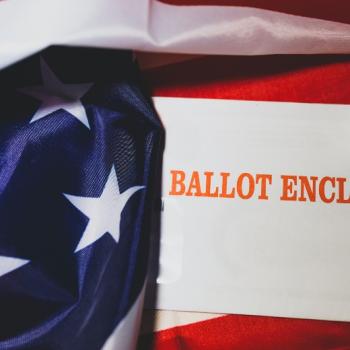
The phrase “separation of church and state” is common in our culture. But what exactly does it mean? And do we have separation of church and state the way our founding fathers envisioned it?
In my previous post (“Should Politicians Be Guided By Their Faith?”), I talked about the impact that a political leader’s religious faith should have on their actions. That impact should be no different than the impact of faith on the actions of any citizen. If we have a religious faith that is important to us, it ought to shape who we are and what we do.
Separation of Church and State: Thomas Jefferson
The fact that this is even a discussion is due to a comment by Thomas Jefferson about “erecting a wall of separation between church and state” in a letter he wrote in 1802. His statement specifically was this: “Believing with you that religion is a matter which lies solely between Man & his God, that he owes account to none other for his faith or his worship, that the legitimate powers of government reach actions only, & not opinions, I contemplate with sovereign reverence that act of the whole American people which declared that their legislature should ‘make no law respecting an establishment of religion, or prohibiting the free exercise thereof,’ thus building a wall of separation between Church and State.”
Separation of Church and State: The First Amendment
Several observations arise from this quote. First, Jefferson was giving his interpretation of the First Amendment to the Constitution: “Congress shall make no law respecting an establishment of religion, or prohibiting the free exercise thereof…” The words “separation of church and state” do not appear in the First Amendment itself.
Second, Jefferson’s political beliefs certainly influenced his interpretation of the First Amendment. He was a Democratic Republican, which was one of the political parties in the early days of the United States; the other party was the Federalist party. The Federalists generally favored a stronger national government, while the Democratic Republicans were more in favor of “States’ Rights.” His political beliefs would have caused Jefferson to lean in favor of restrictions on the federal government. This is evident in his other comments in his letter of 1802 about “the legitimate powers of government.”
Third, the language of the First Amendment includes two clauses: the “Free Exercise” clause and the “Establishment” clause. In simple terms, the “Free Exercise” clause says that Congress can’t pass laws to unduly restrict people in their exercise of their religious freedom. The “Establishment” clause provides that Congress cannot “establish” a particular religion.
Separation of Church and State: Historical Context
We have to remember the historical context of these discussions in the early days of our nation. The English government had “established” one particular religion – the Church of England. It had also passed laws restricting the ability of people with other religious beliefs from the “free exercise” of their religion. Many of the early colonies were established by people with beliefs that were not part of the Church of England: Puritans, Catholics, and Quakers, for instance. They did not want the government to restrict their religious beliefs and practices, nor were they looking for the government to establish a particular faith as “the” acceptable choice.
Any detailed discussion of the Supreme Court jurisprudence on these clauses is beyond the scope of this article. Although I am an attorney by training, my primary vocation has been as a pastor for the past twenty-five years. However, the issues which the Supreme Court has resolved generally deal with the tension between the two clauses of the First Amendment. How far can a law go before it is a “prohibition” of the free exercise of a religion? And how much can the government assist a religious institution before it becomes an “establishment” of religion?
Separation of Church and State: Establishment and Free Exercise
Jefferson was apparently more concerned about “establishment,” which is why he used the phrase “wall of separation between Church and State.” And that brings us back to the question: Do we have a separation of Church and State? I would argue strongly that we do – perhaps even more of a separation than the founders would have envisioned. The real issue is whether the government is favoring one religious belief over others, not whether religious entities receive any protection or benefit at all.
For example, the church I serve participates in a government program which provides grants to organizations that provide food assistance to those in need. We are not excluded simply because we are a church, but we cannot use the funds we receive for “religious purposes.” Our guests are not required to attend services, or listen to a sermon, in order to receive assistance. We invite them to participate in our religious activities, but we don’t require it. The government is not “establishing” our church through our participation in that program, nor is it unduly restricting our “free exercise” of our beliefs.
The fact is that every organization has some set of “beliefs.” Some organizations are explicitly religious; some are expressly irreligious. But the decision to not believe is still a “belief.” If religious groups are excluded simply because of their faith, the government in effect is establishing a secular belief system – a “faith” that is opposed to faith. The government would be abandoning neutrality in favor of opposing religious belief. That seems to be to be contrary to the spirit of the First Amendment.
Separation of Church and State: We Don’t Need More
We clearly have some degree of separation of Church and State – but we don’t need more separation. In my previous article, I argued that an individual’s faith ought to have an impact on them. That is true whether we are politicians or tradesmen. In the same way, an organization’s beliefs clearly impact what that organization does, and how it does it. Our government’s stance in those matters ought to be neutrality, not favoring one belief system over another. That is the approach that has allowed our nation to flourish.


